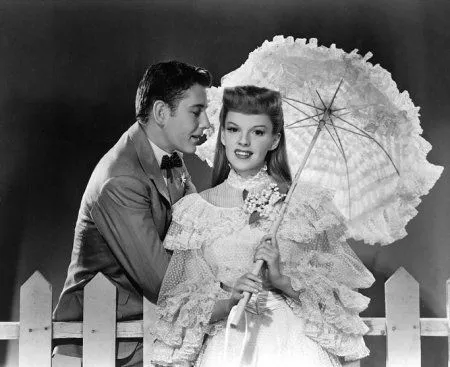

Meet Me In St. Louis – A Star was Born
There are few people who exude the show stopping charisma and screen presence Judy Garland had and this film is a testament to the sheer star power of the troubled icon. Released in 1944 and set around the turn of the century, Meet Me In St. Louis follows the trials and tribulations of the Smith family. The family has four daughters, and all the chaos that comes with them. Esther (Judy Garland), has fallen madly in love with the boy who has just moved in next door but is distraught to learn that her father has accepted his job that will move them from St. Louis to New York. Directed with wit and charm to spare by Vincente Minnelli, who would later famously marry and have a child with Garland, Meet Me In St. Louis proves itself to be a true festive classic.
Set over the space of a year or so in a series of vignettes leading up to the 1904 World Fair, Meet Me In St. Louis breezes through its runtime throwing in songs which would soon become iconic along the way such as ‘The Trolley Song’ and ‘Have Yourself a Merry Little Christmas.’ While the “will they? Won’t they?” romance between John (Tom Drake) is what consumes a lot of the plot, it is the family dynamic throughout that gives the film its heart. The interactions between the family members and the hijinks that ensue truly keep the film going, especially when little ‘Tootie’ Smith is involved, played hilariously by Margaret O’Brien, who won a Juvenile Academy Award for her hilarious performance as the death obsessed youngest member of the Smith clan who must be the blueprint for Wednesday Addams. Many of her scenes are laugh out loud funny with a humour that feels ahead of its time. Each daughter learns lessons in life, love and loss and it makes for a truly wholesome family film that could rival Little Women.
The musical was one of the most popular genres of Hollywood’s golden age, making movie stars of everyone from Meet Me In St. Louis’ very own Judy Garland to Funny Girl’s Barbra Streisand. While I’m not always a fan of this genre as the musical numbers can often freeze the plot from progressing and can often just prove to be spectacle, Minnelli’s film perfectly weaves them into the plot to the point where the film would be lost without them. I cannot imagine the sombre feel of the film during parts of the Christmas vignette with Garland’s beautiful song. The film can go long stretches without songs, a subversion of the genre in a way. Minnelli is not needlessly adding songs in, instead choosing to keep the plot progressing. Many musicals of the time often added in songs for the sake of it, bringing the entire film to a standstill for the spectacle of a musical number. Here, Minelli avoids that trope.
Filled with memorable characters and even more memorable songs, Vincente Minnelli’s Meet Me In St. Louis proves to be one of the most heart-warming musicals of its era. Foregrounding the idea of family and giving that precedence over the musical numbers, Minnelli’s film celebrates love and family when the world at the time of release was probably quite a scary place. The escapism this film provides is a reminder of why we love cinema and a testament to what it can do.

